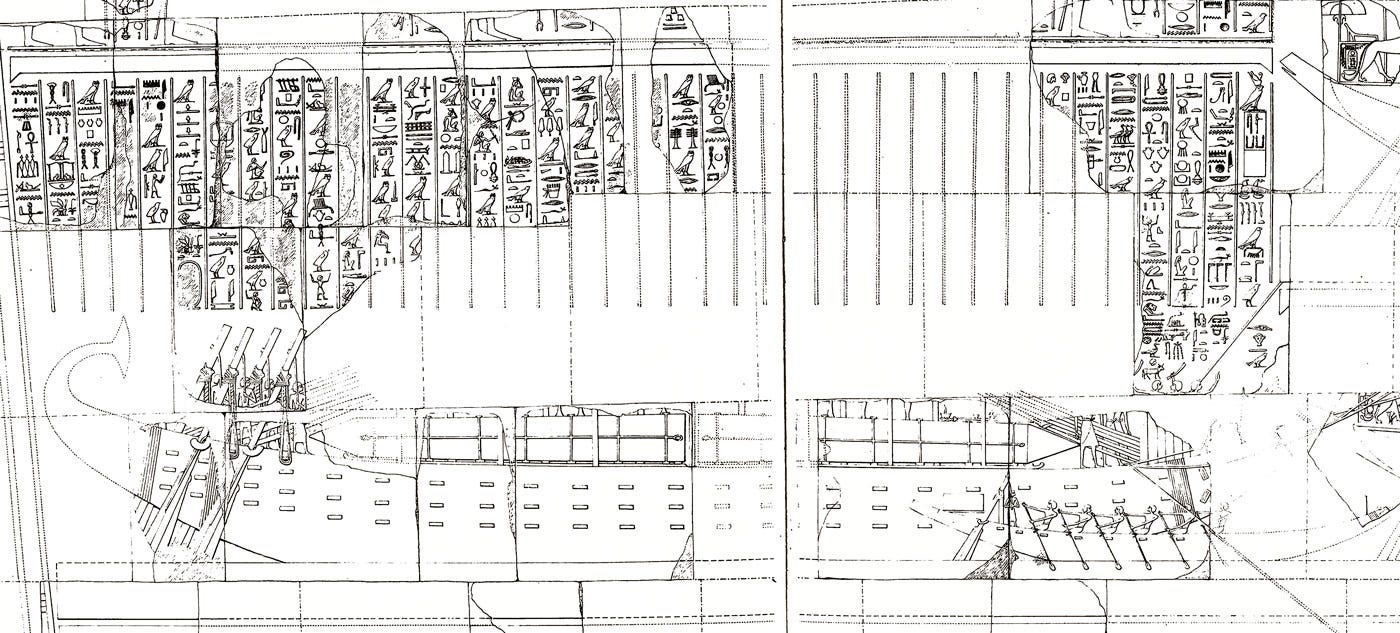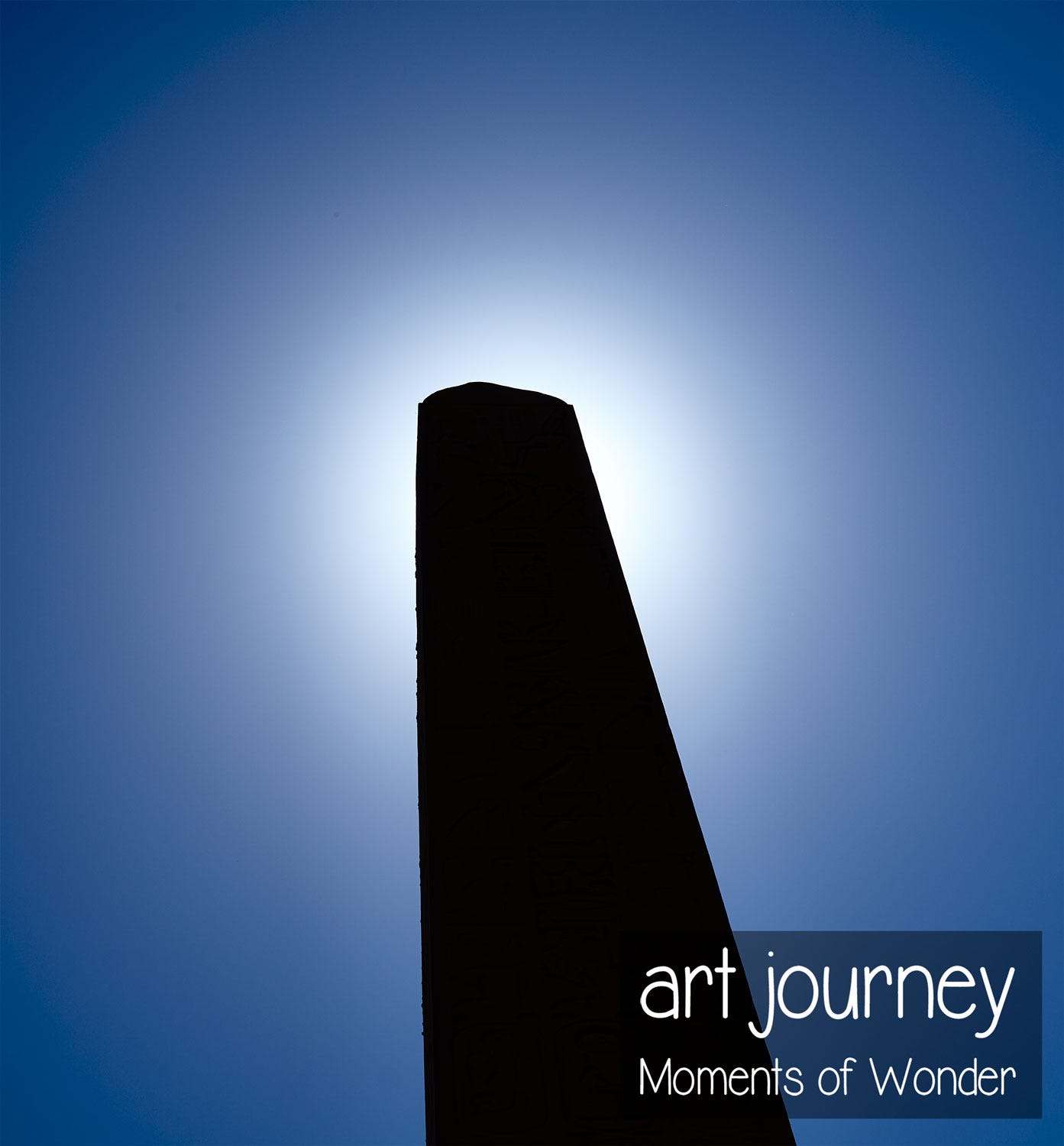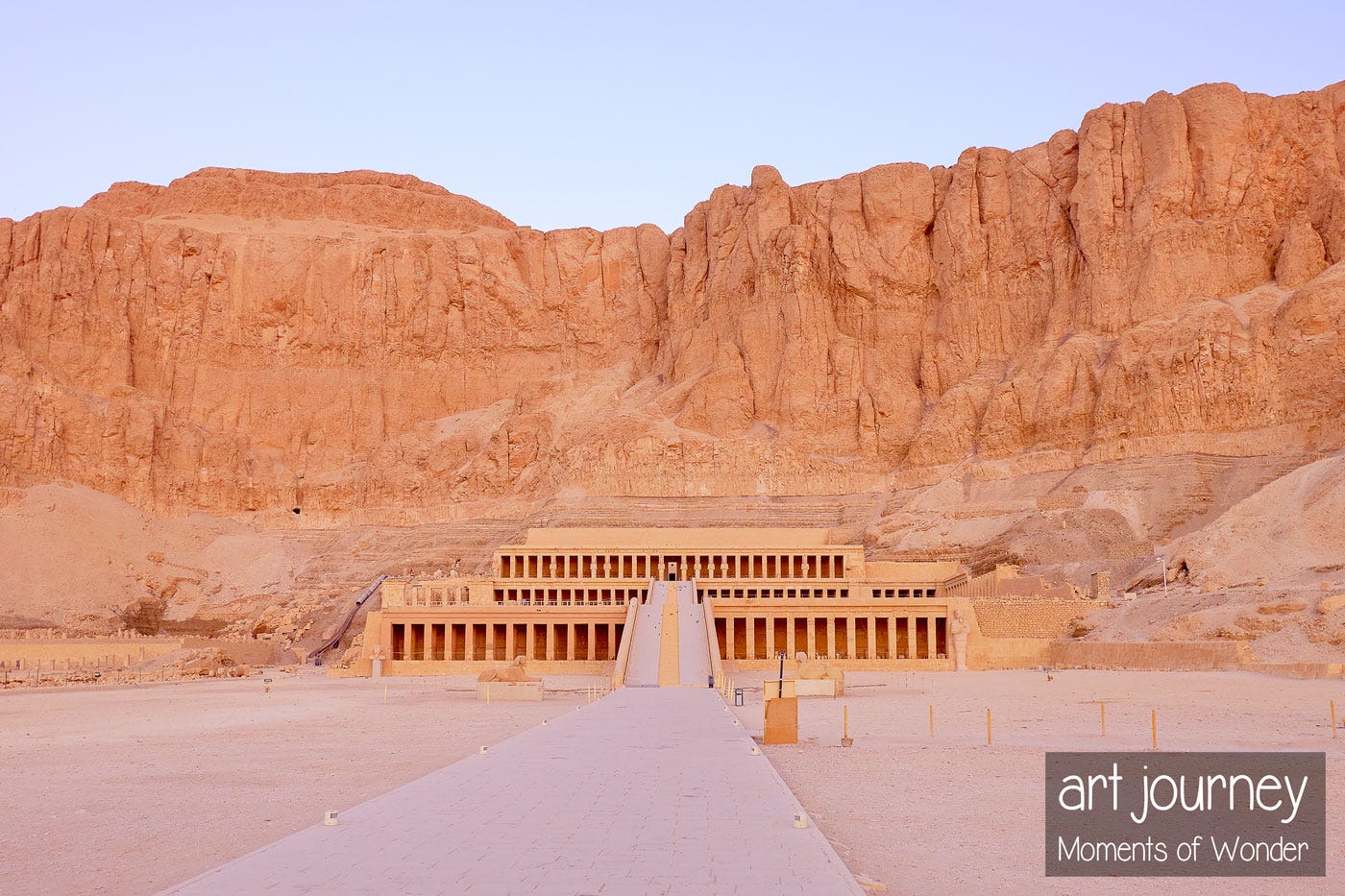Travel to ancient Egypt to the City of the Sun
Virtual time travel where priests and Hatshepsut explain what obelisks and pyramids represent.

This follows the story 'Paris' First Light At The Dawn Of Time.'
To illustrate why obelisks need to be explained, we should start with a simple thing: the word obelisk.
It is Greek for roasting spit.
One would need a gigantic animal to use an obelisk as a skewer to cook meat—and a strong appetite!
When the Greeks arrived in Egypt, they found everything fascinating but strange. As they did not speak a word of Egyptian, they used familiar names to describe unfamiliar things.
The word pyramid means 'cake,' after wheat flour and honey pastry. Imagine the wheat, milk, and honey quantities needed to build Kheops' pyramid!
The list goes on: a sarcophagus is a Greek word meaning 'flesh eater,' precisely what mummification was trying to prevent.
The Greeks were in awe at the Egyptian civilization, one famously saying that:
There is no country that possesses so many wonders, nor any that has such a number of works which defy description.
The Greeks did not believe ancient aliens built pyramids; they instead saw Egypt as a source of wisdom.
Yet, relying on Greeks who do not speak nor read the Egyptian language to explain Egypt is like using Athens' subway map to navigate Cairo's metro.
We are about to climb onboard a time machine and travel five millennia in the past, so fasten your seat belts!
Asking ancient Egyptians to explain obelisks
First, we must fly to Cairo, where our time machine awaits us in a borough called Ayn Shams.
In Arabic, this means the Eye of the Sun, a big clue about our destination: the City of the Sun.
For the Greeks Heliopolis, the ancient Egyptians Iunu, and modern Egyptians Eye of the Sun.
We haven't traveled through time yet, and there is already a Moment of Wonder when we realize that for 5,000 years, this place has been linked to the sun.
Before we set off, remember your sunglasses. We set the time machine to 4,500 years in the past.
The time machine's door opens, revealing an immense temple, at least as large as Karnak—the biggest temple in the ancient world.
Further away, on the other side of the Nile, the three gigantic pyramids are clearly visible—thanks to the absence of pollution.
I asked you to take your sunglasses because the pyramids' surface is polished smooth and white, turning them into colossal mirrors that reflect the sun's rays.
Since we have access to a time machine, we may as well magically speak fluent Egyptian, the language spoken in Pharaonic times.
Better, we speak the flowery language of scholars, the priests. That is why the priests let us inside, although we looked foreign when we knocked on the door.
A conversation with ancient Egyptian priests

In normal circumstances, there would be zero chances that outsiders will be invited inside the hollies of hollies.
We look dirty to Egyptian priests, as they go as far as shaving their eyelashes to be pure in the presence of the god.
But today, impressed that foreigners speak their language, they make an exception on the condition that we touch nothing and behave at our best.
This is a great privilege. Now, they usher us inside the most sacred part of the temple. With great reverence, they speak of their sacred stone, the benben.
The benben is a stone that is shaped like a pyramid.
It may even be a meteorite, but as we promised not to get too close, there is no way to be sure.
Sensing that we are puzzled, the priests explain what we are looking at. Speaking slowly, as one does to children, they explain that a long time ago, there was nothing but a dark ocean, lifeless and empty.
Then, an island, the benben, appeared. On top of that island, a bird, the Benu, shone brightly since it was the newly born sun bringing light to the universe.
This means that the sun created the world, the gods, humans, and everything else. The stone we are looking at is the island from whence the universe was born.
We are standing precisely at the spot where the sun shone for the first time and created our universe.
Sweat drips from our brows. It is not the heat but our poor brains trying to process what the priests say.
A hieroglyphs lesson given by the sun temple priests

We are lucky; these priests are exceptionally patient and offer to sketch what they are trying to tell us on a wooden board.
The word benben is written with a triangle shaped like our sacred stone. It is also the island that appeared out of the dark waters.
On top of that island, a bird called Benu shone like the sun, as it was the first apparition of the sun.
All these words, benben, and benu bird, are linked to a word meaning 'to shine' and 'to rise,' like the sun.
The priest explains that the beautiful temple we are privileged to visit is the Temple of the Benu bird.
He realizes that our brains are still struggling. I will speak in simple terms; the priest tells us:
We worship the sun.
The triangular-shaped stone we venerate in that temple is the first ray of the sun.
It means that stones of triangular shape, whether small or colossal, symbolize the sun creating life.
Every sunrise is a moment of awe and joy for us.
As long as the sun reappears every morning, the universe will live forever, like the sun.
He reminds us of the two golden obelisks we saw outside the temple.
At the temple entrance, you saw two big golden stones. They are shaped like sun rays and are of gold, the sun's color.
He says they are called tekhenu—we call them obelisks—.
Pharaoh Hatshepsut and her obelisks
Now that time travel has helped us realize that obelisks are sun rays, we travel again.
This time, we land 3,500 years ago. A woman sits on the throne of Egypt, one of only a handful of women rulers in three millennia of ancient Egyptian history.
As we magically speak ancient Egyptian, we know there is no word for Queen. There is only ‘King's Wife.'
Hatshepsut was a King's Daughter, then a King's Wife—Queen—and stepmother to the next King, Thutmose III.
But as he was a young boy, Hatshepsut seized the opportunity to make herself Pharaoh.
This means that Hastshepsut was not one of hundreds of Kings' wives but a female King.
We visit because she not only made obelisks but also wrote about them.

The relief above depicts the transport of obelisks from Aswan, 150 miles down the Nile.
Below are Hatshepsut's own words carved on one of her obelisks:
My majesty began work on them in year 15, second month of winter, day I, ending in year 16, fourth month of summer, last day, totaling seven months of quarry work.
Yes, Hatshepsut insists it only took seven months to quarry two obelisks, each weighing 320 tons.
It was my wish to make them for him gilded with electrum (gold and silver).
The obelisks were gilded to be as bright as the sun. Hatshepsut explains to us the intended effect:
Seen on both sides of the river, their rays flood the Two Lands when Aten dawns between them as he rises in heaven's lightland.
Understand the Two Lands as Egypt and the Aten as the solar disc.
In other words, Hatshepsut tells us she erected colossal gilded obelisks to illuminate the world as the day the universe was born.
Hatshepsut keeps saying that there had never been such impressive obelisks before.
It seems that she foresaw that in our time, there would be people who refuse to accept that Egyptians could create these wonders.
That may be the reason why she confidently states
The ignorant and the wise know it.
Hatshepsut would have been quite amused to learn that 3,000 years later, people needed seven years to transport one obelisk to Paris.
Dear reader, this little time travel to ancient Egypt means that, like the Greeks before us, we have been in awe of the ancient Egyptians' wisdom.
Which makes us wiser, in itself a Moment of Wonder.
This art journey illustrates the private tours of Egypt that I organize with my Egyptian friends.
To get an idea of what it feels like, here's feedback:
Guillaume, Saber and Saleem did a professional and wonderful job from pick up at airport to drop off at cruise, their knowledge on the ground of the history and what we experienced was paramount and the local knowledge of when and where to be to avoid crowds invaluable in the seamless planning and experience.
I am so impressed with this group I already have 2 or 3 close friends and family I will be meeting in coming weeks wanting to know what our trip was like and to do the same, I think the personalised service and the planning was excellent.
Thank you all was a wonderful experience and hope to be back. Can not speak more highly of this group.
I had very high expectations due to the time spent planning the trip and overall cost and will state that both Jane and my expectations where not only met but surpassed.
Again cannot say enough great things about something I waited so long to do and sometimes in these situations your expectations are not met because you have had so much time dreaming, again my expectations met and exceeded, worth every cent and the most disappointing part was flying home.
Find out more online: Art Journey Egypt







